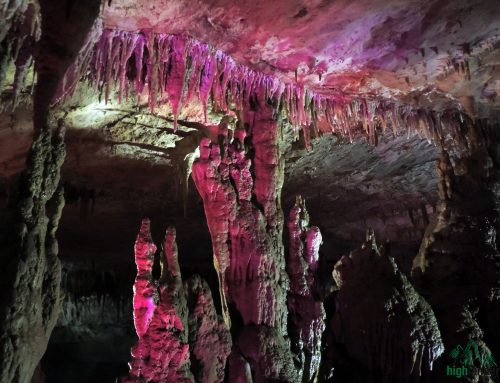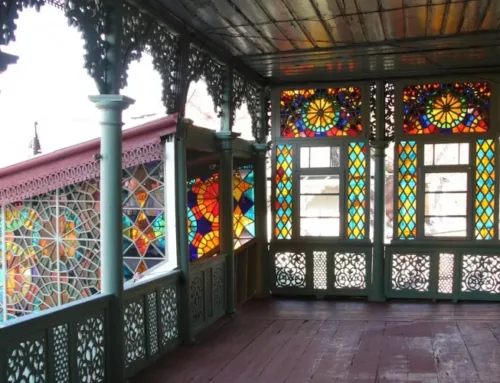Martvili monastery

Martvili monastery, also known as Chkondidi cathedral stands just above the village, on the flatten top of a hill that dominates the area and offers perfect background wives of vast spaces of Kolkhida plane in Samegrelo region. Only two churches and a dwelling tower of once vast monastery complex have survived till nowadays.
Mother of God church with the “free cross” configuration is the main building of the ensemble. It replicates the shape of Mtsheta Holly Cross Monastery. There are different opinions regarding the period of its building, but the first half of VII century is widely accepted to be the most probable date of its construction. The church suffered several rounds of reconstruction so its original configuration has considerably ben changed – the dome is of later times, longitudinal facades are “rectified” by flat walls (all this changes were apparently made in X century), and the western porch with very impressive rising image of Blessing Christ in the front section of the pediment was attached to the church in X century. Current facing of the aforementioned it is obvious that an architect of Martviki has employed creative attitude in regard of to his adorable sample – Mtsheta Holly Cross Monastery. In this particular case the dome is reduced in size and internal niches arranged in the corners are enlarged. The whole range of overhanging arches were introduced instead of traditional tromps. Arrangement of externally fife-faceted apse instead of the traditional three-faceted one is a noteworthy innovation coupled with the placement of all rising decorations next to each other in one consecutive row on the upper section of apses, thus making a kind of decorative strip or belt. These elements do gain the church new type of lightness making it different from “solid” and “calm” contemporaneous churches of East Georgia. The risings reflecting events narrated both in the Old and the New Testaments are of particular significance. Some of them are cut on the apse cornice corbels, however all reveal clear commonalities with early Christian plastics of Mediterranean region. Wall painting preserved in the church interior is of different periods. Paintings in the sanctuary were performed in XIV c, while the apse was adorned in XVI-XVIII cc. There are few fragments of XIII c frescoes coupled with some small sections of preserved mosaic. The whole range of frescoes of the Grand princes of Mengrelia – representatives of the house of Dadiani is noteworthy from both historical and artistic points – some of them are already the portraits in the post-renaissance understanding of this word. A smaller, two storied domed church is located north of the main temple. The stile of dome adornment and treatment of the apse arcades clearly indicate that the construction most probably was built in early XI c. So called “Pillar” located westwards of the main temple is of the same period. Actually it is a tower, crowned with a small single-nave church adorned with fretwork, where hermits of the monastery led their ascetic lives. Half-destroyed in XIX c the tower was resorted in 1970-ies.










